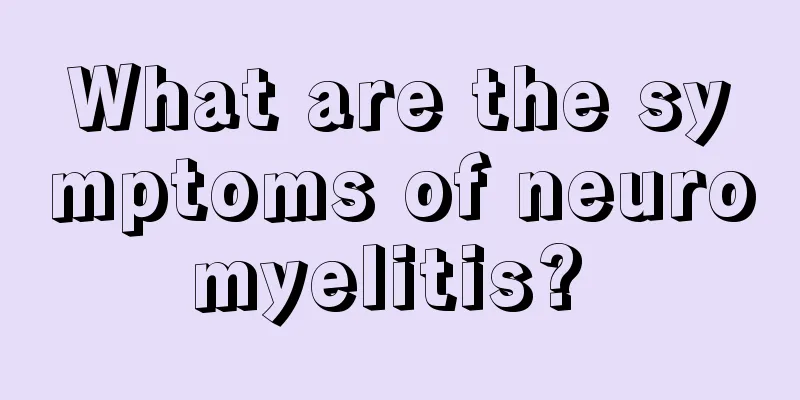What are the symptoms of neuromyelitis?

|
Disease is a great destructive factor to people's lives. For example, neuromyelitis is a disease with a very big impact. It can cause extreme pain in the patient's body. In addition, inflammation of the spinal nerves is very difficult to treat, and the treatment process is also very long. Let's take a look at the symptoms of neuromyelitis. I hope everyone can understand. Neuromyelitis optica is an inflammatory demyelinating disease of the central nervous system that primarily affects the optic nerves and spinal cord. The main clinical feature is the simultaneous or sequential involvement of the optic nerve and spinal cord. The disease can occur at any age, with an average age of 30 to 40 years old, and is more common in women. Currently, single-phase neuromyelitis optica is usually called Devic's disease, and multi-phase neuromyelitis optica is called relapsing neuromyelitis optica. Clinical manifestations The onset is generally acute or subacute, reaching its peak within a few days and 1 to 2 months respectively. In a minority of patients with chronic onset, the condition steadily progresses over several months and worsens progressively. 1. Optic nerve damage Both eyes are often affected simultaneously or successively. Initially, vision is reduced and the eyeball is swollen and painful, which is more obvious when the eye moves. In acute cases, the affected eye suffers partial or complete loss of vision within hours or days. The main visual field changes are central scotoma and centripetal narrowing of the visual field, and hemianopsia or quadrantanopsia may also occur. 2. Spinal cord damage It manifests as complete transverse lesions of the spinal cord. Within hours to days, the motor, sensory and autonomic nerve functions of both sides of the spinal cord are severely impaired, and movement disorders can rapidly progress to paraplegia or quadriplegia. If the lesion is in the cervical segment, a positive Lhermitte sign may appear. In severe cases, severe demyelination causes the nerve impulse to spread, leading to painful spasms and paroxysmal convulsions. 3. Other symptoms A small number of patients may experience optic nerve and extraspinal symptoms, such as dizziness, facial numbness, nystagmus, headache, and postural tremor. A very small number of patients may experience extraocular muscle paralysis, epilepsy, ataxia, dysarthria and peripheral nerve damage. |
<<: What are the symptoms of neurological enteritis?
>>: Treatment of blue algae in white shrimp
Recommend
How to use eye patches to relieve eye fatigue
The eyes are the windows to the soul, but in our ...
There is white sticky substance in the stool
Normally, a healthy person's stool should be ...
Can cervical biopsy confirm cervical cancer?
The only way we can do and confirm the lesion is ...
Do you have acne on your skin? Six ways to help you improve
In real life, acne is a skin problem that many pe...
How much does a course of chemotherapy for breast cancer cost
If the CET scheme is adopted, the price of chemot...
Why do children have common bile duct dilatation
Children are prone to various diseases because of...
What is the difference between color ultrasound and B-ultrasound?
The rapid development of modern medical technolog...
What are the symptoms of sepsis rash?
For sepsis, we need to focus on prevention and tr...
Can purpura kill people?
Nowadays, many patients are troubled by purpura. ...
What's the matter with the intermittent stabbing pain in my waist
If patients find themselves experiencing intermit...
How long will it take for melanoma to die if you don't take medicine
If a disease like melanoma appears in our lives, ...
Is fever with lung cancer good or bad?
Is fever with lung cancer good or bad? 1. When lu...
Prevention and treatment of tuberculosis
Regarding the prevention of infectious diseases, ...
Three Chinese herbal prescriptions for treating skin cancer
Skin cancer includes basal cell carcinoma, squamo...
The hazards of using hyaluronic acid stock solution
When it comes to staying young and maintaining ce...









